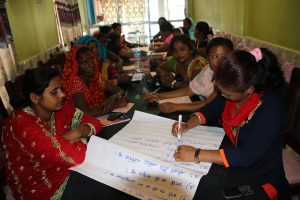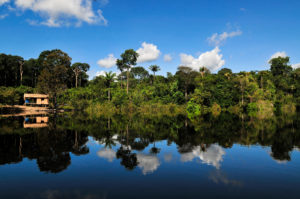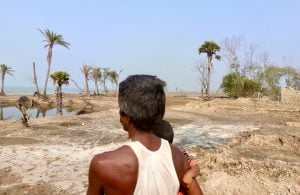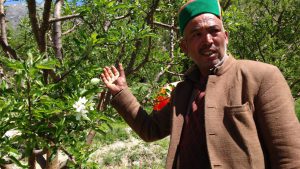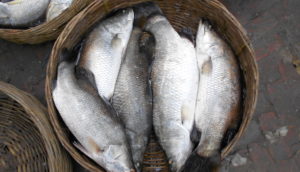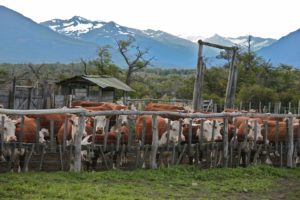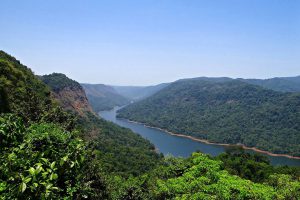What does the Hilsa – the most popular fish among Bengalis, have to do with human rights? Well to understand that we need to understand the human dimensions of South Asian fisheries management, and also the life cycle of Hilsa, also known as Ilish.
The Hilsa is an anadromous fish, which means it travels from the sea to as far upstream as it can to breed and then goes back to the sea, if it can. The hatchlings grow as juveniles in the breeding grounds in rivers, and then also go back following the route of their parents. In any point of this natural life cycle, they risk being caught in the nets of fishers or being smashed by the fans of sand miners or ships. And there are millions of fishers who make a living every year by catching this fish.
From the perspective of a ‘hardcore’ conservationist, these fisherfolk (these include both men and women) might seem like a big threat, but these are also some of the most marginalised communities in the Bay of Bengal because this region is the heartland for Hilsa.
Bangladesh claims to account for 60% of the Hilsa catch every year and it is the country’s national fish. To protect this important fishery, Bangladesh has set up a landmark management system, imposing a blanket fishing ban for more than two months every year. This measure has reversed the earlier declining trend of the fish catch. The government of Bangladesh is looking forward to increasing its production to 500,000 metric tonnes by the year 2020, which was just over 200,000 metric tonnes around the year 2000-01, as per the data of the government’s department of fisheries.
See: Bangladesh saves its favourite fish
A similar approach was followed by the government of the state of West Bengal in India to protect Hilsa, but the ban has been ignored and Hilsa numbers continue to decline rapidly.
But the big bycatch of this story is the human cost behind this fish conservation.
A poor substitute for not fishing
In Bangladesh, in return for obeying the fishing ban, all these Hilsa fishers get is 40 kilogrammes of rice per month per family, during the the fishing ban. Some conservationists have claimed this as a successful payment for ecosystem services or PES scheme. But if we divide this by the average number of family members, this comes down to around USD 0.13 per day per person. This is way below the USD 1 extreme poverty line. Which means, for the sake of conservation, fisher families must stay below the extreme poverty line if they do not have any other source of income.
But if the Hilsa catch is increasing so much, then the fisherfolk’s income should also grow, and they should be able to make up for the loss of income during the ban.
This is where the geographic distribution of fisherfolk and the migration path of Hilsa become important factors. The number of fisherfolk in the coastal districts is much higher than in the upstream districts. This means it is harder to catch fish downstream and except for the ban period, the fish do not even reach the upstream areas starting from Chandpur in Bangladesh up to upstream areas of Assam along the Brahmaputra and Barak rivers.
So the fisherfolk from these regions would have to travel a long way to fish, making it less feasible for them to make a living wage from their catch, or making it more feasible to move away from their traditional way of earning. Supposedly during these fishing bans, no one can fish anything. In the words of a fisheries officer from Bangladesh, whom I cannot name here, “We will not allow even a thread to touch the river waters”. In reality, something quite different happens.
I had the opportunity to be in touch with 480 fisherfolk from Chandpur and Kurigram districts of Bangladesh during the latest fishing ban, through a network of 44 volunteers, as part of an exercise we call ‘Hilsa Watch’. These fisherfolk from areas upstream in the Padma-Ganga-Meghna network of rivers shared their stories and experiences during the bans. It turns out that they wait for this the ban season for what is popularly known as ‘obhijan’ (expedition), as this is the only time they get to catch Hilsa. As fishing efforts downstream stay relatively low the fish are able to reach them. The income from this time is what keeps them going for the rest of the year.
We found that on average, these fisherfolk are burdened with large loans, which they have had to take from different micro-credit organisations. They spend over 20% of their earnings to cover the instalments, while spending only 16% for food. The support they receive from the government does not cover even 1% of their costs for the month. This clearly explains why these people take such a risk in violating the ban on fishing.
The high cost of violating the ban
While this year’s overview from government data is not publicly available yet, in Chandpur district alone, over a period of 22 days, about 133 fisherfolk were sentenced to jail for a cumulative period of 112 years, 4 months and 15 days.

In 2014, 565 fisherfolk were jailed across the country and about BDT 2 billion (USD 24 million) worth of nets were burned. Every year, this burning alone costs the fisherfolk a large share of their capital. One of the most common questions we were asked by fisherfolk during our interviews was related to the lack of action against the producers of illegal fishing nets known as ‘current-jal’, while fisherfolk faced strict punishment. In their opinion, “They come to burn our nets as soon as we have paid our money to the big business owners who produce the nets. Why don’t they burn them before they are sold?”
Before we started this ‘Hilsa Watch’ exercise, we took a fisherfolk representative to meet top officials from the department of fisheries. They shared this concern and apparently the government is restricted by several ongoing cases in the courts against shutting down the net-factories that produce the illegal nets.
These are among many of the human costs that are being paid by some for the delicious Hilsa to keep coming to our plates, while some others are benefiting from it. It must be asked whether our conservation activities are serving the needs of the marginalised fisherfolk or the big businesses and affluent customers.
One of the senior members of the fisheries department, when asked some of these tough questions by fisherfolk during a dialogue in October this year arranged by an environmental NGO in Dhaka, said, “We would be more than happy if we did not have to enforce any strict laws and people were able to protect their own fisheries resources by themselves.” He went on to suggest that there is a need for research into ways to improve the lives of fishers through sustainable growth of the fisheries and ensuring fair benefits to the fishers.
Bringing human rights and sustainability together
In recent years, we have seen human rights and the environment being discussed together, through the resolution 28/11 of the Human Rights Council as well as the appointment of the UN special rapporteur on human rights and the environment. The rapporteur has been focusing on the responsibility of the State to ensure a safe, clean, healthy and sustainable environment, and has brought forward 16 principles.
Among these principles, the 15th suggests acknowledging the rights of members of traditional communities to access and control over the natural resources they depend on, including the right of communities to be consulted and the need to obtain their free prior and informed consent before taking any measures or decisions that may effect their resources. It further suggests giving responsibility to the State to ensure, fair and equitable share of the benefits from natural resources to these communities. The plight of the Hilsa fisherfolk echoes what the special rapporteur is trying to bring to our attention. This also aligns with the core values of the constitutions of South Asian countries, so it should not be alien to us.
If India is going to enforce the ban as strictly as Bangladesh, it must also be prepared to face the same challenges. So far it has been less strict, or maybe just less successful, in enforcing this ban.
See: Laws flouted, Hilsa dies In West Bengal
If the two countries do work together on it in the future, which would be the only way to preserve the fish across some of its traditional habitat, it would be wise to include the needs of the poor in the calculations. Perhaps it will bring the fisherfolk of the two countries together.
![<p>Hilsa fish at a market in Barisal, Bangladesh [image by Finn Thilsted]</p>](https://dialogue.earth/content/uploads/2016/04/Hilsa-fish-bangladesh-pic.jpg)
